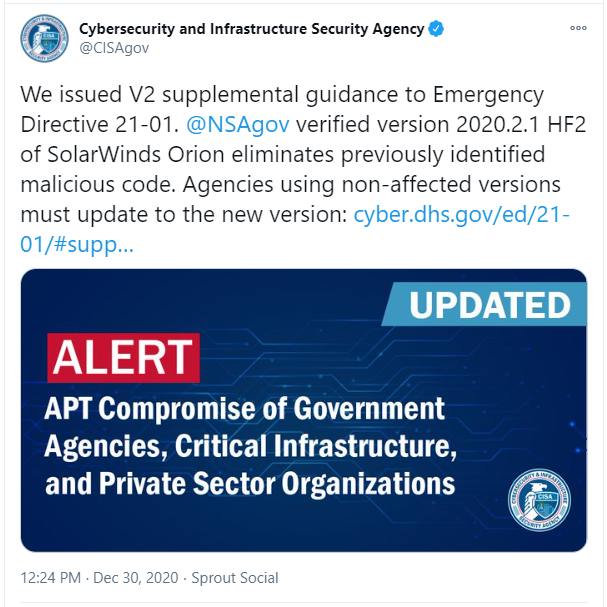Hello All. The deadline of December 31, 2020 that DHS’s Cybersecurity and Infrastructure Security Agency (CISA) have imposed requiring that all US federal agencies to update their SolarWinds Orion platform to the latest version of Orion has come and gone. We all know having been on the sharp end of the stick requiring the business to update vulnerable software can sometimes end with the business accepting the risk. This is essentially what CISA is requiring US Government depts. and agencies to do if they are unable to upgrade for some reason or another.
They also have to provide proof that a “forensic analysis” has been conducted to verify that a breach has not already occurred using the vulnerable install of Orion. However, there is even an exception for those who are unable to perform a forensic analysis – “Agencies running affected versions that have no capability to conduct forensic analysis (system memory, host storage, network, and cloud) shall, at minimum, hunt for IOCs or other evidence of threat actor activity published in ED 21-01, Activity Alert AA20-352A, and future associated guidance. Agencies that, through hunting and/or forensic analysis, find these IOCs or evidence of threat actor activity, such as secondary AOO, shall assume breach and must report it as an incident to CISA through https://us-cert.cisa.gov/report”
Here is the supplemental guidance v3 from CISA:
“This supplemental guidance v3 requires (1) agencies that ran affected versions conduct forensic analysis, (2) agencies that accept the risk of running SolarWinds Orion comply with certain hardening requirements, and (3) reporting by agency from department-level Chief Information Officers (CIOs) by Tuesday, January 19, and Monday, January 25, 2020.”
Would be interesting to know what the stats are on the remaining affected installations of Orion and what depts. and agencies are affected. With all the exceptions in place, do you think the US Government is leaving themselves open for breaches?
Read more on the CISA site: https://cyber.dhs.gov/ed/21-01/#supplemental-guidance


